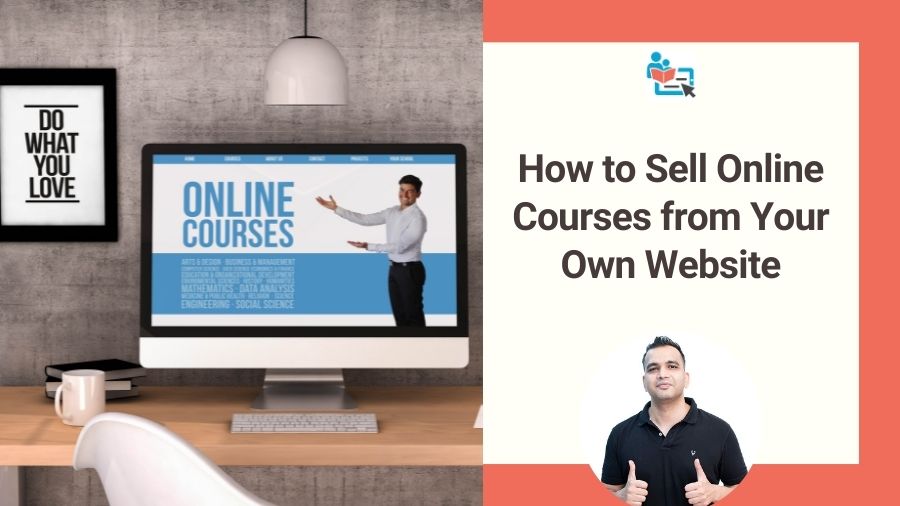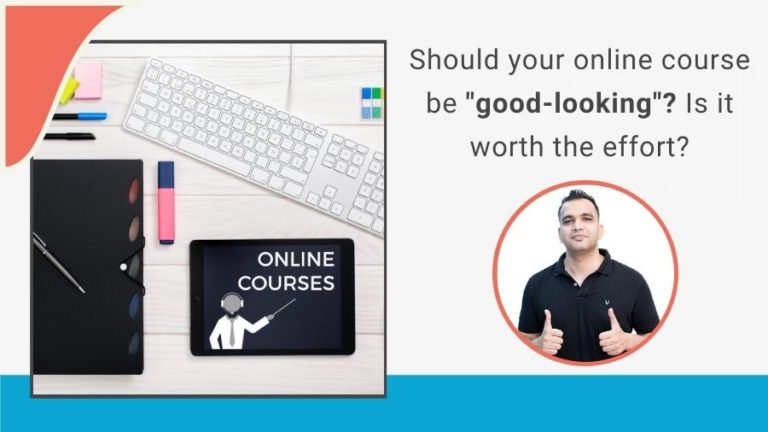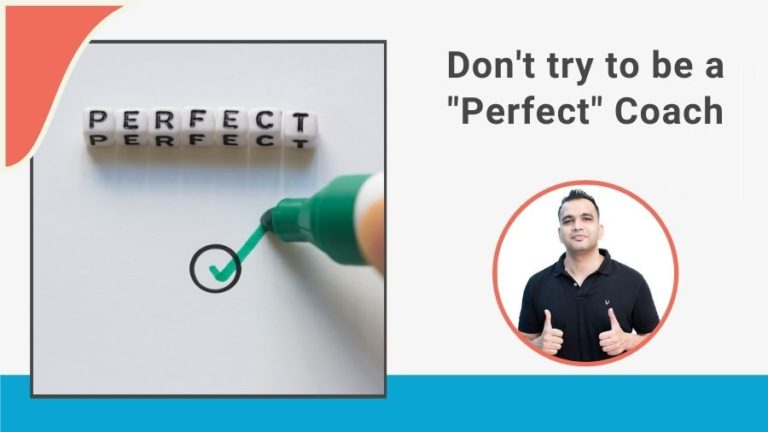How to Sell Online Courses From Your Own Website?
When it comes to selling online courses, there are a host of different options but there is no doubt that the best way to sell online courses from your own website.
In this article, I will walk you through the different options of selling your online course and list down the pros and cons of each approach. This will ultimately make you understand why selling your online courses from your website is the best option. And it will also make you understand how to sell online courses from your own website.
There are basically three different approaches you can take when it comes to selling your online courses:
- Selling your online courses with the help of online course marketplaces like Udemy, Skillshare, Course Era, etc.
- Selling your online courses with the help of a Learning Management System (LMS), like the ones offered by Teachable, Thinkific, Podia, etc.
- Selling your online courses directly from your own website.
First of all, let’s talk about the pros and cons of each approach and then we’ll see how to sell your online course from your website. So let’s start by analysing the first option:
Selling your online courses with the help of online course marketplaces

Online course marketplaces like Udemy and Skillshare make it very convenient to upload your online courses and sell them once they are approved.
It’s perhaps the most stress-free way of selling online courses.
But there are a couple of issues:
- You don’t get to decide the selling price – Most of these course marketplaces allow you to set a list price for your online course but you’ll not be able to stop these companies from selling your online courses at a lesser price. For example, let’s say you upload an online course on Udemy and set the list price at $249. Now when Udemy run its promotions to market your course, they’ll actually sell your course for $10 or something around that because they need these courses to convert. So you lose out on control and your course gets devalued majorly. Which also brings us to the second problem.
- Since Udemy is promoting your own course using their own advertising, they won’t give you the whole amount. They’ll take a heavy cut from the sale. So not only will your course sell at a very less price, you won’t even get the whole of that amount. The only time you get the full amount is when a student of yours buys your course from Udemy using your own unique link that you gave to them. And this creates another problem.
- Let’s say you share a link with one of your students and he or she purchases your course at the list price of $249. You get the whole amount too. So it seems like this is a good approach. But the issue is that another student of yours may see a promotion being run by Udemy and buy your course at the promotional offer of $10. Now you have two students – one who bought your course at $249 and another who bought your course at $10. This is bound to create brand issues for you in the long run and can be very unfair on you as well as your students.
- Course marketplaces like Udemy don’t give you the email addresses of the people who bought your online courses. This severely limits the growth of your business since it doesn’t allow you to contact these students again. Though these course marketplaces allow you to send a limited number of promotional emails to your course buyers through their own email marketing system, it’s still not as effective and flexible as having your own email list. Always remember, owning an email list of your students and subscribers is the MOST important thing when it comes running a sustainable online course business.
- Another issue with only using a course marketplace is you have to rely on the payment options offered by them. This is ok if they have an integration with a popular payment portals offered in your country but usually that’s not the case. And if the students in your country do not get different payment options which only might be available via local payment gateways, then your conversions can suffer.
- The final issue is that if you plan to do advanced things like retargeting using Facebook ads or Google ads, you won’t be able to upload a Facebook or Google Ads pixel since you don’t own that platform.
Now let’s look at the second option:
Selling your online courses using only a Learning Management System (LMS)

Using an LMS is a better option than Udemy because it doesn’t have some of the above problems that we saw. LMS companies only provide you the facility of uploading or hosting your online courses and delivering them to your students via a professional looking user interface. They don’t do any marketing for you. This means your price is not affected in anyway. Your course will never be sold at a lesser price that what you have set.
Secondly, these companies will give you access to the emails of the students who enroll. In fact most of them even have integrations with certain email marketing providers so when a student enrolls they also get added to your email marketing system. In case the email marketing company that you use does not have a direct integration with the LMS, you can always use a tool like Zapier to integrate the LMS with your email marketing company. But the important point is that you will get access to the emails of your students so you can build your own email list.
But there are a couple of issues with using only a LMS and not having your own website. Let’s look at some of them:
- Building high quality sales pages or landing pages – Yes, most LMS companies will allow you to design sales pages for your online course on their platform and allow you to achieve a decent look but they will still never be able to match the quality you can get if you were to build these pages on your own on your own website. Remember, one of the important things that will convince yours students to purchase your online courses is how good your sales page or landing page is. Having your own website allows you to use different tools and plugins to create very effective landing pages. For example, I used a plugin called Thrive Architect to design the sales page of Online Course Blueprint.
- You are at the mercy of the LMS company – Since you are using the LMS platform to both host your online course as well as use it as your website, you have basically put all your eggs in one basket. Tomorrow if that LMS company shuts down or decides to increase its prices, you’ll have very little room to negotiate.
- Then there is the same issue of not having enough payment options that we saw above with the course marketplaces. So your conversions can suffer. And LMS companies will also usually take a decent amount of transaction fees from that.
- Good LMS companies will allow you to add a Facebook or Google pixel for retargeting but you’ll need to be a on a paid plan.
Basically, using a LMS company to sell your online courses doesn’t give you as much control as you would have if you were using your own website.
But is a LMS company to be completely avoided? Abosultely not. You are about to find out why later on in this article.
So by now, we know that using a course marketplace like Udemy or a LMS like Teachable aren’t ideal solutions when used all by themselves.
Now let’s look at the third option:
Selling Online Courses From Your Website

When it comes to having control, this is the best option.
You don’t have to worry about the price of your online course or the ability to get the emails of your students since everything is happening on your own website.
All you need is to integrate a payment gateway with your website so that you can collect payments for your online courses. And doing that is fairly simple.
What is not so simple is how to deliver your online courses.
With a course marketplace like Udemy or a LMS like Teachable, course delivery is flawless because the moment someone purchases the course, they are asked to create an account on the repsective platform and a login ID and password are emailed to them. They can use this login ID and password to access the course.
When it comes to your own website, this can be challenging to implement.
So when we talk about selling online courses from your own website, we are basically talking about implementing the following things:
- Where will your course videos be hosted?
- How will your students pay you for course?
- How will you students get access to your courses?
The answer to the second question is simple because you can integrate a payment gateway with your website.
But the answer to the 1st and 3rd questions is not that straightforward.
First, let’s talk about hosting videos. You don’t want to upload videos on your own website because that would mean your website will slow down a lot. In fact most hosting companies won’t even allow you to do that on a basic shared hosting plan.
So you can use YouTube or Vimeo to upload your videos and hide them from general public using the privacy settings. (Vimeo is preferable since it has advanced privacy settings when using Vimeo’s paid plans)
But what about the last question about delivering your online courses.
This is the most challenging part when it comes selling online courses from your own website.
How do you deliver your courses in a seamless manner after your students have purchased your course?
First of all, the thing to avoid is to embed your uploaded YouTube or Vimeo videos on a normal page on your website and giving the URL of that page to your students. This would mean anyone with that URL can get access to your course.
It is possible to implement a membership plugin on your website which means that once your students pay you, the membership plugin will give you the ability to send those students a unique login ID and password to access the page which has the videos.
The thing with membership plugins is that they are not that easy to implement. You will really need to dig deep and figure how they work and then spend a lot of effort into making them work correctly. I recently tried doing that with a plugin called LearnDash and it turned into a very unpleasant experience for me. On top of that, good membership plugins are costly.
So what’s the way out?
The best method in my opinion is to use a LMS for the delivery part. And you do the selling on your website so you can have a good looking sales page and basically do any sort of funnel related marketing that you want.
Once your students make the payment, you can deliver the course via a LMS. This can be done by integrating the LMS payment button on your website or if you want to have a separate payment gateway, then you can use a service like Zapier to integrate the LMS with your payment gateway.
Now using Zapier has its own challenges mainly because of two things – One is that once you start getting a lot of enrollments, you’ll have to start using a paid plan on Zapier. And more importantly, LMS comapnies usually don’t allow Zapier integration on their most basic plans since they lose out on the transaction fees if you are using an external payment gateway. So you will most likely have to go for a higher priced plans with these LMS companies.
But I still feel selling from your own website in conjuction with a LMS is currently the best way to sell your online courses.
Having your own website is great for your identity and brand and you can do literally anything because it’s your own website, right from customzing the look to having advanced capabilities when it comes to running Facebook or Google ads for retargeting.
What am I doing with my own online course at the moment?
Currently I’m using a LMS called Spayee to host and deliver my main course called Online Course Blueprint. And the best part is that they have a built-in integration with Instamojo, the most popular payment gateway in India so I don’t have to use Zapier. But I do the selling from this page on my own website.
At Creative Pad Media, my other online course business, where I sell online courses related to photography and videography, I upload my course videos on YouTube (with the privacy setting) and then put the links to these videos in a PDF document which can be downloaded after a student makes a payment. It’s a free approach but the issue is that anyone can share that PDF and my course will be compromised. I would not suggest this approach especially if you are selling a course at a higher price.
As you can see, selling your online courses is a complex affair because there are so many points to consider. I am still continually testing things to find the most ideal solution of selling online courses form your own website which will offer the perfect balance between cost and effectiveness. I’ll keep you updated as I find out more.
Let me know your thoughts in the comments section below.








really wonderful article. covering all the pros and cons of available options.
i am right now in a same situation and not able to decided.
since budget is my big problem, i cannot afford to use LMS right now , i a thinking of using own website with fewer webpages and content weight.
Thanks Pradeep. Yes, you can follow that approach if you are just starting out and waiting to see if your course does well. Once you start getting more enrollments, I would suggest you shift your course over to a LMS since security will become important once you have a lot of students.
Insightful, we are fortunate to be benefited by your experience and research.
Thanks for the kind words Gurpreet!
I want to know more
Hi MK Nawaz, you can join me for our webinar on how to create and sell online courses. To know when the next webinar is taking place you can click here and fill up the form so I’ll be able to stay in touch with you via email and let you know the date of the next webinar. You can also check out our main course called Online Course Blueprint to learn everything in a more detailed way.
Everthing said and done, I have one complain the price that you are coating is exorbitant and behond reach of many wannabis
Thanks
Hi Amit, I can understand your concern but whenever you do a course, you have to treat it like an investment. Having said that, we do run a lot of offer campaigns for the course. Just keep an eye out via email and our Facebook page. Also, in our webinars, we give it away at a special price. So be on the look out for that too and join us.
Good. Thanks for inputs . i will take further assistance once my course is ready
That’s great. Good luck!
It’s all explained so well…. however I was wondering if you have people to upload all the course one has and set up everything ofcourse at a fee
I’m glad you liked it. Uploading is definitely a task and one I dislike myself but currently I just swallow that bitter pill and do it myself.